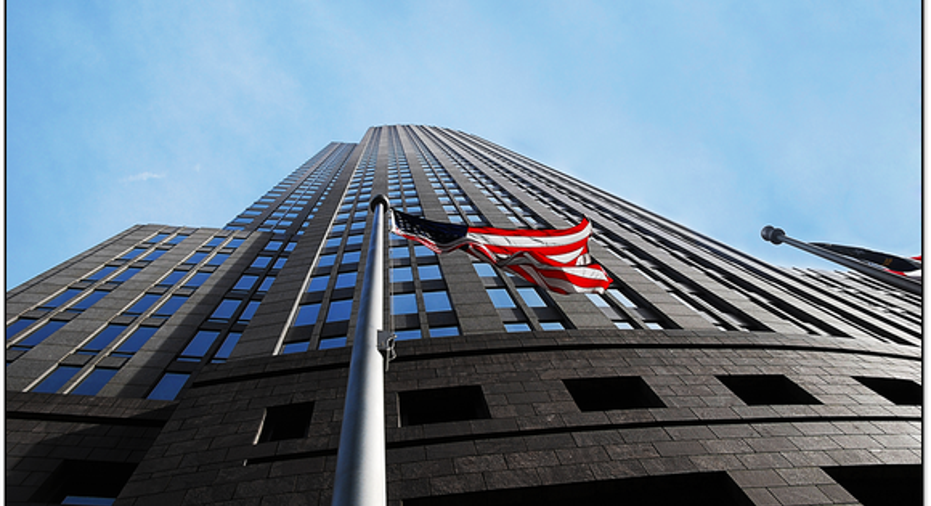Dont Be Ridiculous, Its Time to Start Buying Bank of Americas Stock

As Bank of America's stock continues to fall with the rest of the market, investors should be getting increasingly confident that its shares are a buy.
I put my money where my mouth is on Monday, purchasing shares of the nation's second-biggest bank by assets. And assuming the market continues to drop, I intend to continue doing so -- though, the timing won't always be ideal for me because, as a stock market commentator, I'm subject to trading restrictions.
Most investors, however, aren't subject to the same hurdle, which is why I'd encourage you to think long and hard about starting to move in on Bank of America, as concerns about a crisis in China permeate the headlines.
You can be confident that the market will recover.
- It did after the reoccurring panics of the Gilded Age.
- It did after the Panic of 1907.
- It did after the Great Depression.
- It did after the then-unprecedented shocks to the energy market throughout the 1970s.
- It did after Black Monday in 1987.
- It did after the technology bubble of the late 1990s.
- It did after the financial crisis of 2008-2009.
And it will again, even if investors' worst fears about China come to fruition.
You won't make money in the market if you only buy when everything looks great -- or rather, you won't make as much as you otherwise could. That's when stocks are expensive. Stocks are cheap when people are scared. And bank stocks, in particular, are cheap when people like George Soros start intimating that another financial crisis is imminent.
Investors genuinely thought Bank of America was on the verge of failure in 2011, sending its stock to $5 a share. But while the rest of the market fled, Warren Buffett moved in, committing $5 billion of Berkshire Hathway's money to the North Carolina-based bank in a textbook illustration of his maxim to "be fearful when others are greedy and greedy when others are fearful."
Buffett did the same thing with Berkshire's money in the early 1990s -- though Wells Fargo was his target. At the time, Wells Fargo was battling through a downturn in commercial real estate in California, its biggest market. Commentators at the time were questioning his sanity, as they predicted that the now soon-to-be third biggest bank by assets wouldn't survive.
To say that Buffett's decision to ignore the gloomy predictions worked well for the 85-year-old billionaire would be an understatement. According to Buffett's most recent letter to shareholders, Berkshire is sitting on a roughly $15 billion gain in Wells Fargo's stock, which is also Berkshire's largest holding.
To be clear, I don't believe there's any reason to assume that we're on the eve of a second financial crisis. China's in trouble. There's no doubt about that. Its central bank wouldn't be rapidly reducing the value of the yuan if it weren't, as the move goes against the country's decades-long effort to strengthen its currency in order to emerge as a major financial, not just industrial, player in the global economy.
At the same time, however, banks in the United States -- which were the cause of the last crisis -- haven't been as strong in years as they are today. They hold more capital. Credit quality is pristine. And their risk managers have reascended to the top of the corporate hierarchy in terms of their influence.
With respect to Bank of America, in particular, it's coming off its best year since the financial crisis -- by a long shot. Its legal expenses have finally receded into the background. Its debt rating is improving, which should lower its cost of funds, boost its net interest margin, and fuel profitability. And it's rapidly winding down its "bad bank" -- its legacy assets and servicing division -- created in the wake of the crisis to service toxic and noncore assets.
The third quarter of last year, in fact, marked the first time in almost a decade that the $2.2 trillion bank was able to string together four consecutive quarters of respectable profitability. If its fourth-quarter results follow suit, which is a reasonable conclusion in my opinion, then it will be primed to sail through the upcoming stress tests in March, which will then dictate whether or not it can increase the amount of capital it returns to shareholders.
CEO Brian Moynihan has been clear in the past that his intent is to recycle as much as possible of the bank's excess capital into share buybacks. At the bank's current valuation, that would catalyze the increase in its stock price.
In short, I may be wrong, but I believe shrewd investors should perceive temporary corrections like the one we're currently experiencing as opportunities to buy. Don't spend your money all at once, as the market could still fall before recovering. You'll accordingly want to average down as it does. But now, at least in my opinion, is nevertheless the time that you want to start establishing your position in a stock that will recover.
The article Dont Be Ridiculous, Its Time to Start Buying Bank of Americas Stock originally appeared on Fool.com.
John Maxfield owns shares of Bank of America. The Motley Fool owns shares of and recommends Wells Fargo. The Motley Fool has the following options: short January 2016 $52 puts on Wells Fargo. The Motley Fool recommends Bank of America. Try any of our Foolish newsletter services free for 30 days. We Fools may not all hold the same opinions, but we all believe that considering a diverse range of insights makes us better investors. The Motley Fool has a disclosure policy.
Copyright 1995 - 2016 The Motley Fool, LLC. All rights reserved. The Motley Fool has a disclosure policy.